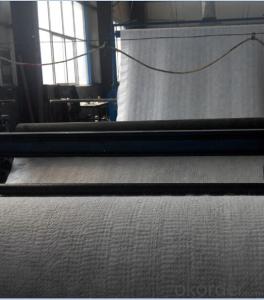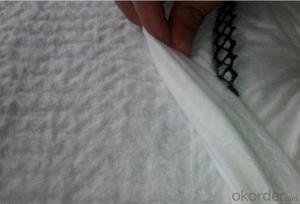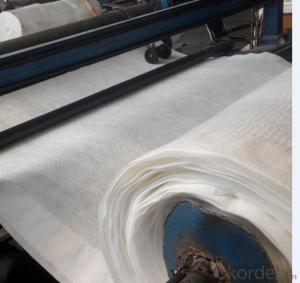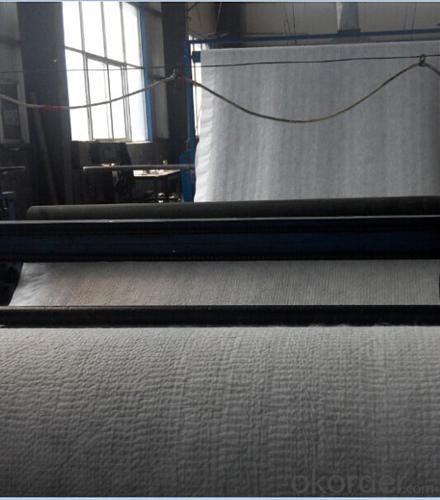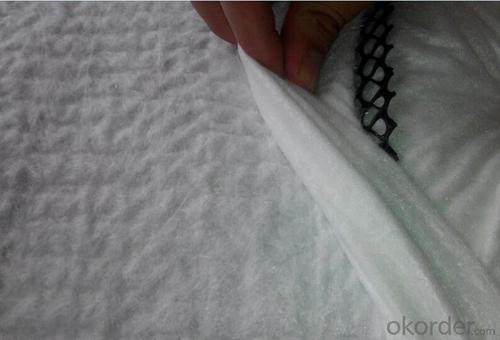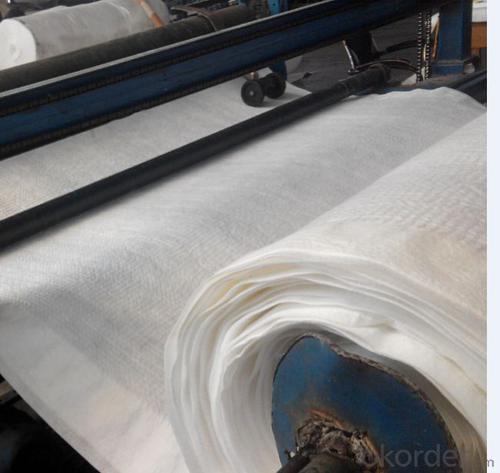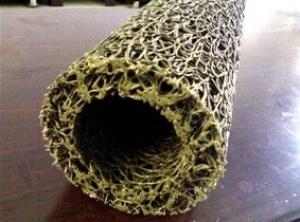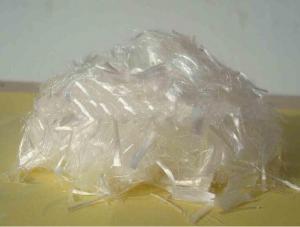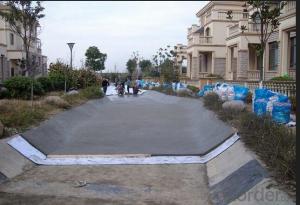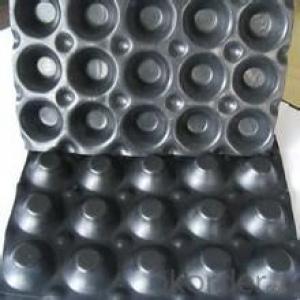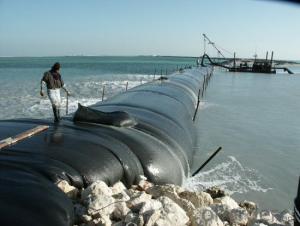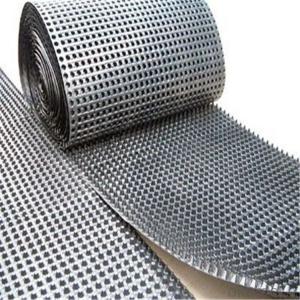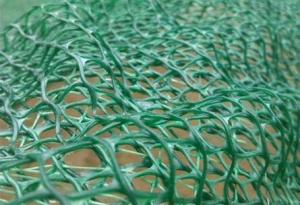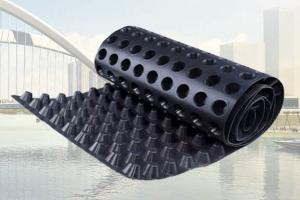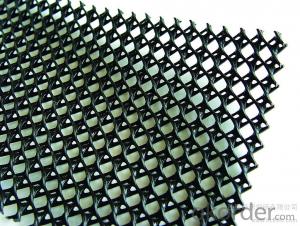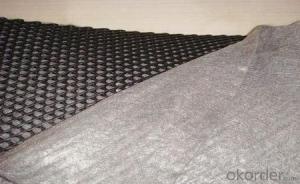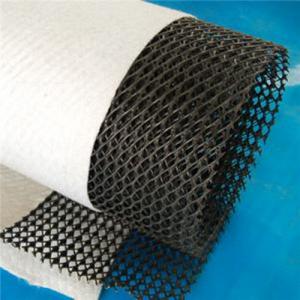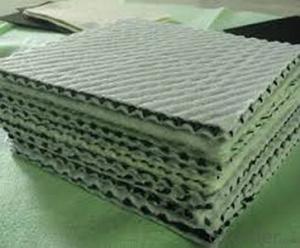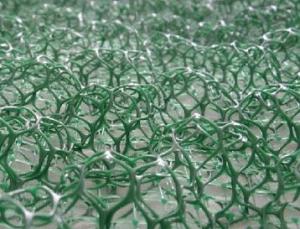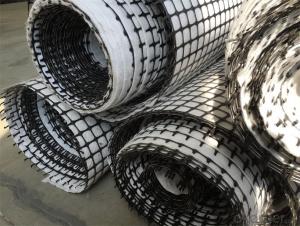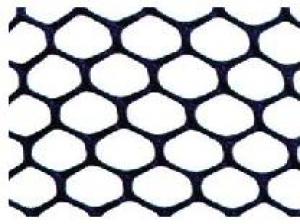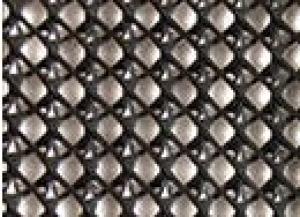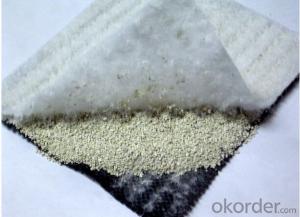Three-dimensional Drainage HDPE Network Composite Geotextile
- Loading Port:
- Qingdao
- Payment Terms:
- TT OR LC
- Min Order Qty:
- 2000 m²
- Supply Capability:
- 200000 m²/month
OKorder Service Pledge
OKorder Financial Service
You Might Also Like
Geocomposite Drainage
Brief Description:
Geocomposite drainage is a drainage system consisting of three-dimensioanal high-density polyethylene
geonet, with high permeability, compressive strength and tensile strength, combined on one or both sides with
a nonwoven polypropylene geotextile.
Features:
1. Three functions in one unit: filtration, drainage and protection.
2. The installation is simple and rapid comparing to traditional sand grains and gravel layer.
3. Cost-effective substitute for traditional drainage system provide savings on materials, transportation and in-
stallation.
4. Chemically resistant construcion provide long life in harsh environments.
Specifications and technical parameters:
Drainage network core | units | Specification | ||||
Unit weight | g/m2 | 750 | 1000 | 1300 | 1600 | |
Thickness | Mm | 5.0 | 6.0 | 7.0 | 7.6 | |
Hydraulic conductivity | m/s | kx10-4 | Kx10-4 | Kx10-4 | Kx10-4 | |
Elongation | % | 50 | 50 | 50 | 50 | |
Tensile strength (core netwaork) | kN/m | 8 | 10 | 12 | 14 | |
Geotextile | g/m2 | Heavier grades of geotextiles can be bonded to geonet on request | ||||
Usages:
In the railway, highway and other transportation infrastructure, drainage system safety and the service life
of the project and its have inseparable relationship, in which the geotextile material is an important part
of drainage system, the drainage effect of 3D composite drainage net is particularly notable. mainly
used for tunnels, municipal engineering, reservoir, revetment in drainage engineering.
FAQ
1. Which payment do you accept?
For you convinience,our payment can be L/C,TT
2. Is free sample available?
We can supply free samples if you need.
3. How about your quality?
We have strict quality control system, we make testing on incoming raw material and finished products. Your third party testing is also welcomed. With high quality, our products are used on government projects at home and abroad. Our product quality is accepted by clients from all over the world
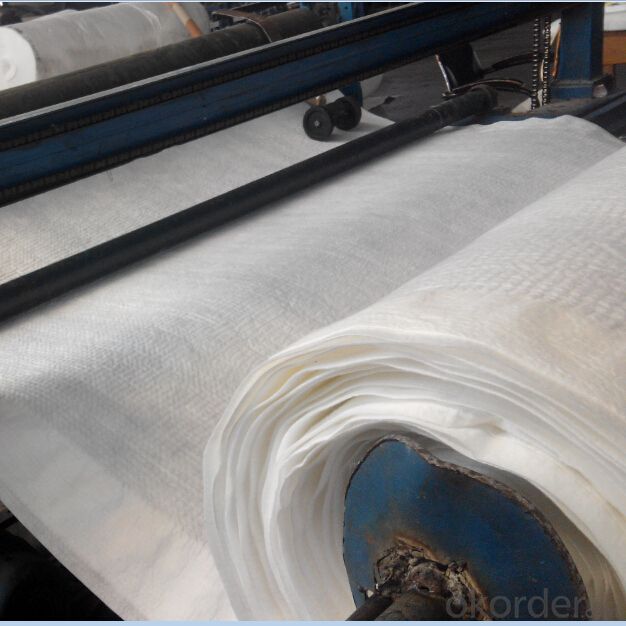
- Q: What are the key properties to consider when selecting geosynthetic materials for earthwork?
- When selecting geosynthetic materials for earthwork, it is important to consider their key properties such as strength, durability, permeability, and compatibility with the soil and other materials. These properties determine the material's ability to withstand the forces and stresses imposed by the earthwork, its lifespan, its ability to allow water flow or drainage, and how well it integrates with the surrounding environment.
- Q: Can earthwork products be used for waterway management?
- Yes, earthwork products can be used for waterway management. Earthwork products such as erosion control blankets, geotextiles, and geogrids can help stabilize soil and prevent erosion along waterways. These products can also be used to construct channels, levees, and dams, which are important for managing and controlling water flow in rivers, streams, and other water bodies.
- Q: How do earthwork products help with groundwater recharge?
- Earthwork products, such as retention ponds, infiltration basins, and bioswales, play a crucial role in groundwater recharge by effectively managing stormwater runoff. These products are designed to capture and slow down the flow of rainwater, allowing it to percolate into the ground and replenish the aquifers. Additionally, these structures also help filter out pollutants and sediments from the runoff, ensuring that the recharged groundwater is of good quality. Overall, earthwork products provide sustainable and efficient solutions to enhance groundwater recharge and maintain water balance in the ecosystem.
- Q: Can earthwork products be used in underground storage applications?
- Yes, earthwork products can be used in underground storage applications. These products, such as geotextiles and geosynthetics, are commonly used to reinforce and stabilize the ground in underground storage facilities, providing additional strength and durability to the structure. They help prevent soil erosion, improve drainage, and enhance the overall performance and lifespan of the underground storage system.
- Q: Can geosynthetics be used for reinforcement in airport runways?
- Yes, geosynthetics can be used for reinforcement in airport runways. Geosynthetics such as geogrids, geotextiles, and geocomposites have been successfully employed to enhance the stability, durability, and load-bearing capacity of airport runways. These materials help to distribute the load and provide reinforcement against differential settlement, base course deformation, and lateral movement. Additionally, geosynthetics can improve the overall performance and lifespan of airport runways while reducing maintenance requirements.
- Q: Are earthwork products suitable for constructing horse arenas?
- Yes, earthwork products are suitable for constructing horse arenas. These products, such as gravel, sand, and clay, can be used to create a solid and stable base for the arena. Properly prepared and leveled earthwork products can help improve drainage, provide good footing, and reduce the risk of injury to the horses.
- Q: Briefly describe the technical requirements of civil engineering for the use of its building materials and explain its reasons
- Because the building materials in the civil engineering are used for all aspects of structure, finishes, insulation, filling and so on, there is a need for physical and mechanical technical requirements for building materials to meet the practicality, functionality, durability and beauty of buildings or structures The need for sex.
- Q: How do earthwork products enhance the stability of slopes and embankments?
- Earthwork products enhance the stability of slopes and embankments by providing reinforcement and erosion control. These products, such as geotextiles, geogrids, and gabion walls, help to distribute loads and prevent soil erosion. They improve the overall strength and stability of the slope or embankment, reducing the risk of landslides and collapse.
- Q: What are the advantages of using geosynthetic materials in road pavement rehabilitation?
- There are several advantages of using geosynthetic materials in road pavement rehabilitation. Firstly, geosynthetic materials act as a reinforcement for the pavement structure, increasing its strength and durability. This helps in reducing the occurrence of cracks and potholes, thereby extending the lifespan of the road. Secondly, geosynthetics provide excellent separation between the subgrade soil and the overlying pavement layers. This prevents the mixing of different soil layers and allows for better load distribution, reducing the risk of structural failure. Additionally, geosynthetic materials have the ability to improve the drainage characteristics of the pavement. They can act as a drainage layer, allowing water to flow away from the pavement structure, reducing the risk of water-induced damage. Furthermore, geosynthetics are lightweight and easy to install, leading to cost and time savings during construction. They can also be easily recycled, making them an environmentally friendly option. Overall, the use of geosynthetic materials in road pavement rehabilitation offers numerous benefits such as increased strength, improved drainage, enhanced durability, and cost-effective construction, making it a preferred choice for road infrastructure projects.
- Q: Material science and civil engineering which is better?
- Definitely civil engineering is good
Send your message to us
Three-dimensional Drainage HDPE Network Composite Geotextile
- Loading Port:
- Qingdao
- Payment Terms:
- TT OR LC
- Min Order Qty:
- 2000 m²
- Supply Capability:
- 200000 m²/month
OKorder Service Pledge
OKorder Financial Service
Similar products
Hot products
Hot Searches
Related keywords
